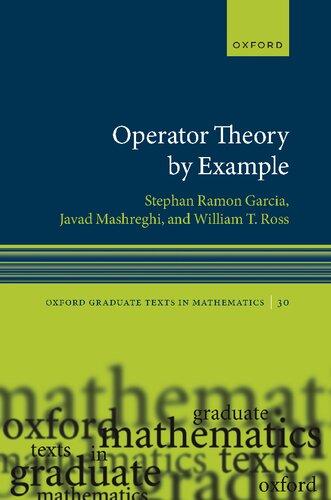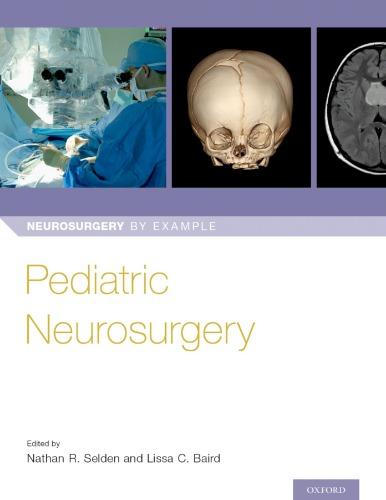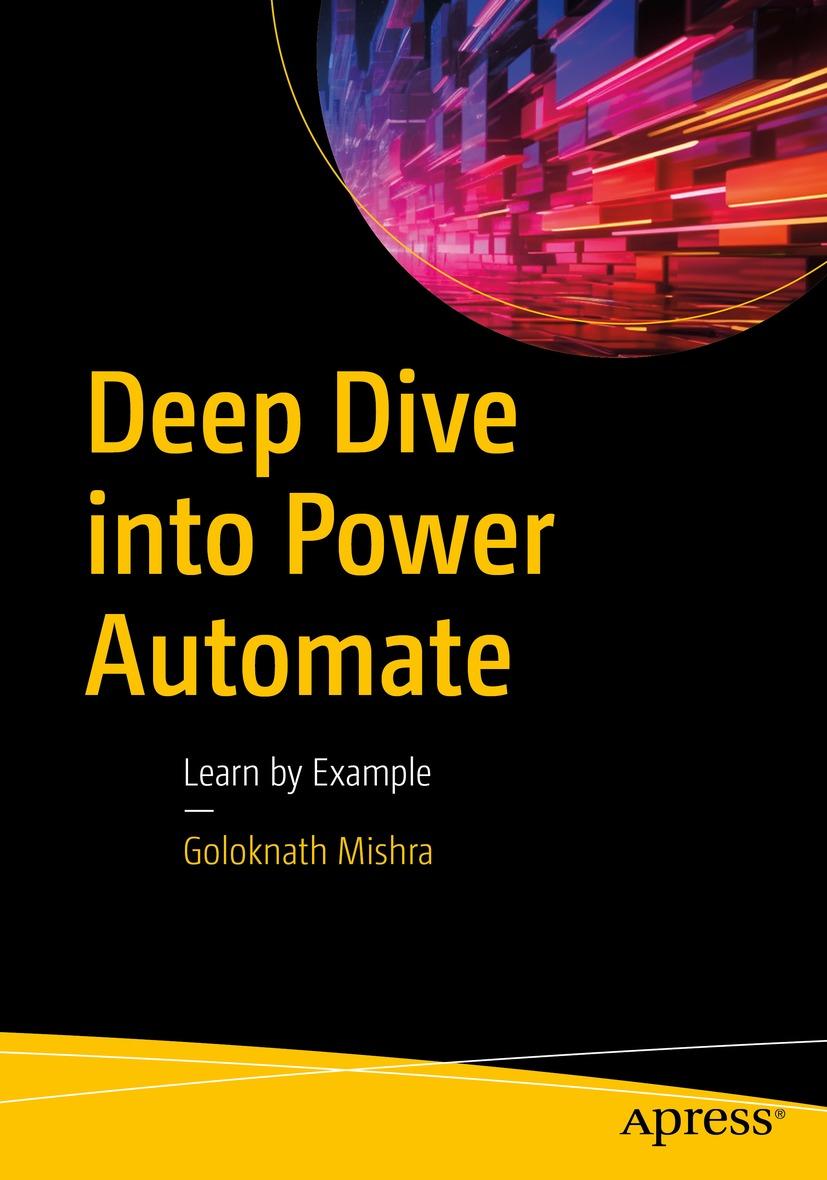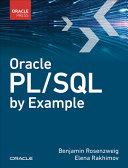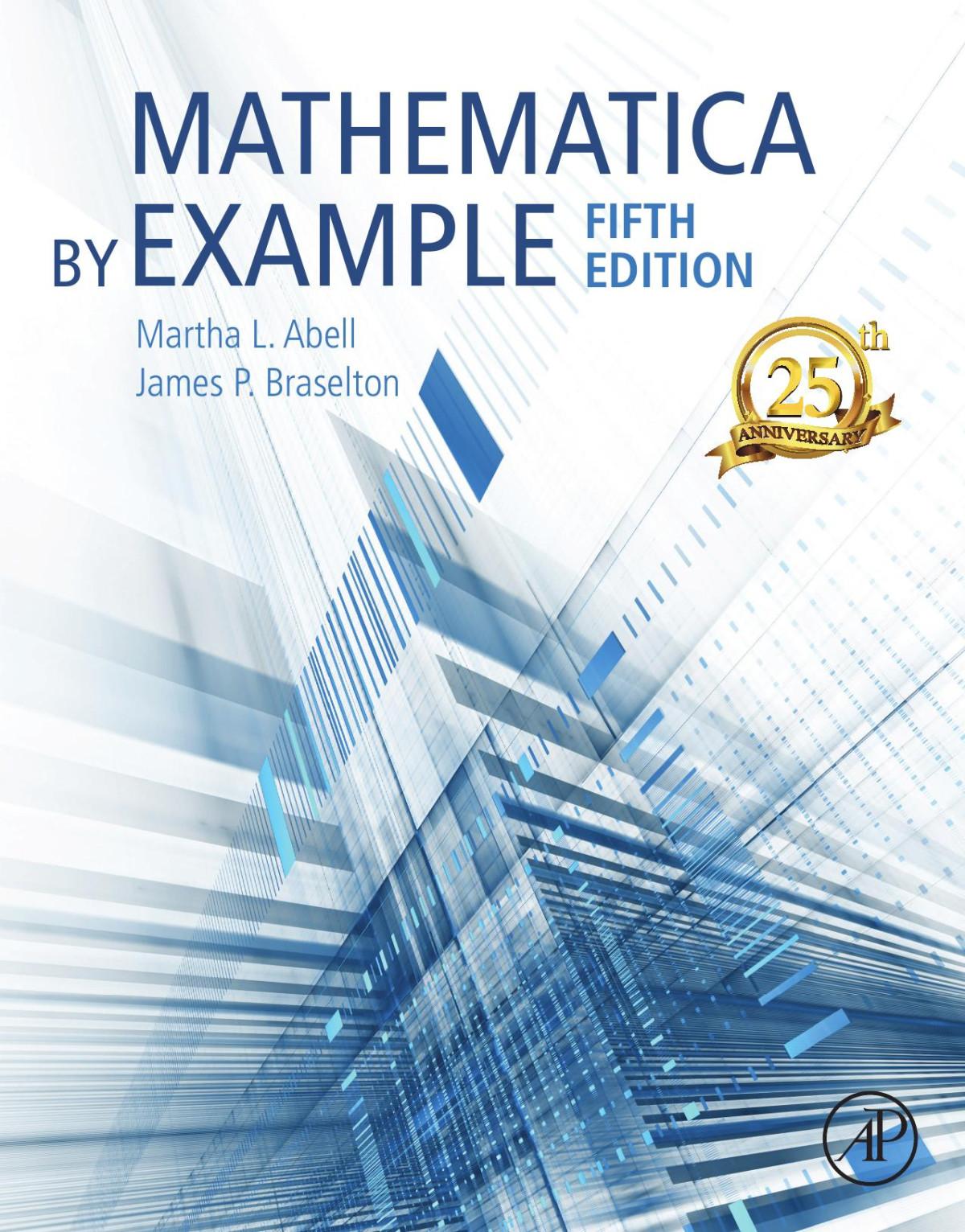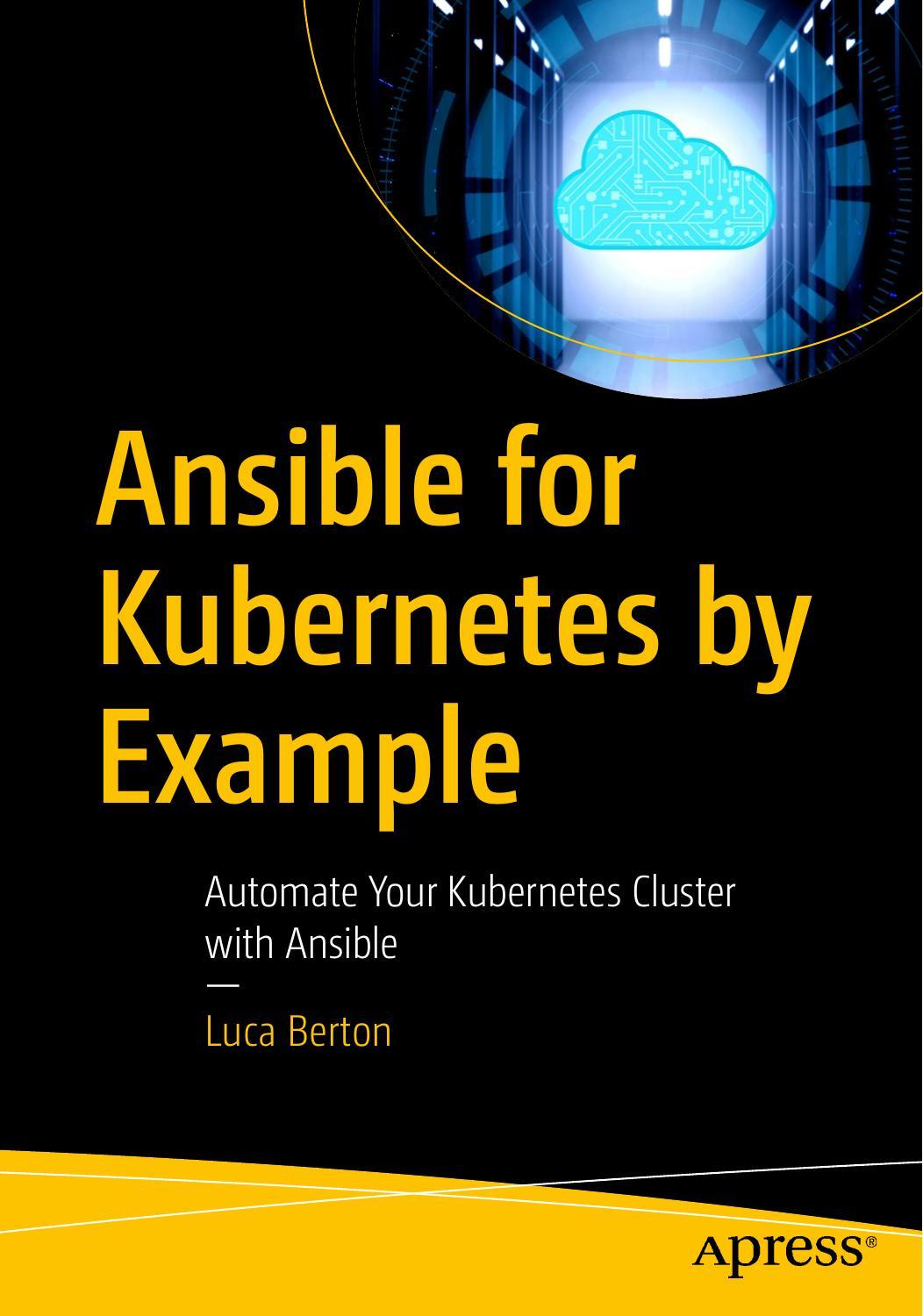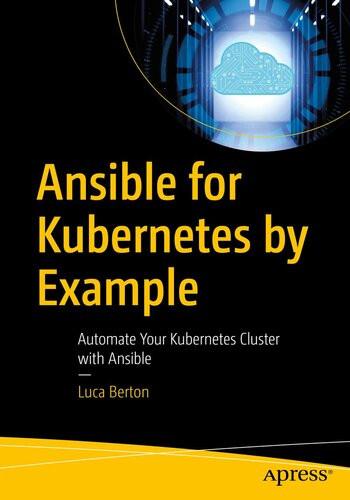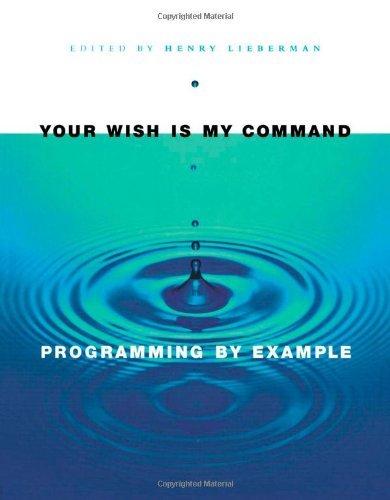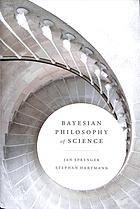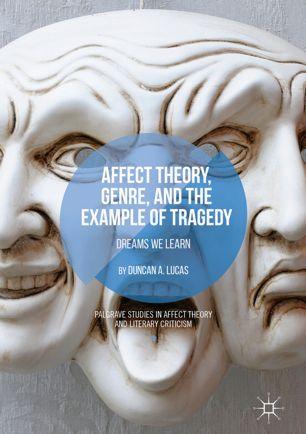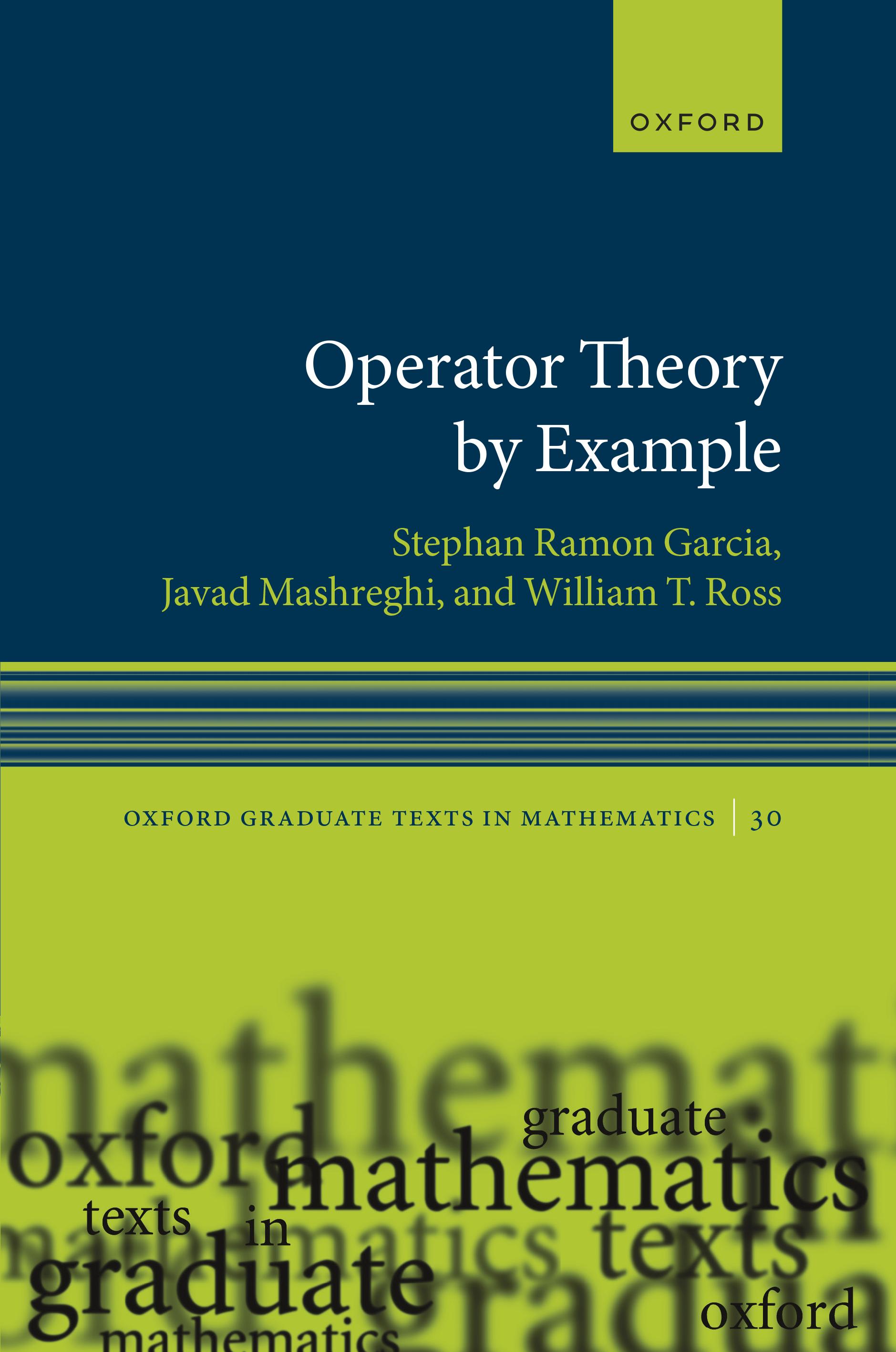PREFACE
Thisisthebookwewishwehadasgraduatestudents.Asitsnamesuggests,thisbookis allaboutexamples.Insteadoflistingahostofconceptsallatonceinanabstractsetting, webringideasalongslowlyandillustrateeachnewideawithexplicitandinstructive examples.Asonecanseewiththechaptertitles,thefocusofeachchapterisona specificoperatorandnotonaconcept.Theimportanttopicsarecoveredthroughconcrete operatorsandsettings.
Asforstyle,wetakegreatpainsnottotalkdowntooraboveouraudience.Forexample, wereligiouslyeschewthedismissivewords“obvious”and“trivial,”whichhavecaused untoldhoursofheartacheandself-doubtforpuzzledgraduatestudentstheworldover. Ourprerequisitesareminimalandwetaketimetohighlightargumentsanddetailsthat areoftenbrushedoverinothersources.
Intermsofprerequisites,wehopethatthereaderhashadsomeexposuretoLebesgue’s theoryofintegration.FamiliaritywiththeLebesgueintegralandthethreebigconvergencetheorems(Fatou’slemma,themonotoneconvergencetheorem,andthedominated convergencetheorem)issufficientforourpurposes.Inaddition,anundergraduate-level courseincomplexanalysisisneededforsomeofthechapters.Wecarefullydevelop everythingelse.Moreover,wecoveranyneededbackgroundmaterialaspartofthe discussion.Wedonotburdenthereader,whoisanxioustogettooperatortheory,witha largevolumeofpreliminarymaterial.Nordowemakethempausetheirreadingtochase downaconceptorformulafromanappendix.
By“operatortheory,”wemeanthestudyofboundedoperatorsonHilbertspaces. WechoosetoworkwithHilbertspaces,notonlybecauseoftheirbeauty,ubiquity,and greatapplicability,butalsobecausetheyarethesteppingstonetomorespecialized investigations.Interestedreaderswhowishtopursuefurtherstudiesinsomeofthe topicscoveredhere,butintheBanach-spacesetting,willbewellequippedtodosoonce Hilbertspacesandtheiroperatorsarefirmlyunderstood.Weareprimarilyconcerned withconcretepropertiesofindividualoperators:norm,spectrum,compactness,invariant subspaces,andsoforth.Manyofourexamplesarenon-normaloperators,andhence lieoutsidethefocusofmanystandardtexts,inwhichvarioussubclassesofnormal operatorsplayadistinguishedrole.Althoughalgebrasofoperatorsoccasionallyarisein whatfollows,thisisnotabookonoperatoralgebras(however,wemustadmitbeing influencedbythetitleof[105]).Nordoweenterintothetheoryofunboundedoperators onHilbertspaces.
Theendnotesforeachchapterarefilledwithhistoricaldetailswhichallowthereader tounderstandthedevelopmentofeachparticulartopic.Weprovidecopiousreferences incasethereaderwishestoconsulttheoriginalsourcesordelvedeeperintoaparticular topictheyfindinteresting.
Eachchaptercomesequippedwithdozensofproblems.Intotal,thisbookcontainsover 600problems.Someofthemeasethereaderintothesubject.Othersaskthestudentto supplyaproofofsometechnicaldetail.Morecomplicatedproblems,whichsometimes explainmaterialnotcoveredinthetext,aresplitintoseveralpartstoensurethatthe studentisnotlefttreadingwater.Weprovidehintsformanyoftheproblemsanditis ourintentionthattheattentivestudentshouldbeabletoworkthroughalloftheexercises withoutoutsideassistance.
Theproofsandexampleswepresentareinstructive.Wetrynottohidebehindslick argumentsthatdonoteasilygeneralize.Neitherdoweholdbackonthedetails.Although everyonemaylearnsomethingfromthisbook,ourprimaryaudienceconsistsofgraduate studentsandentry-levelresearchers.
Finally,thisbookisnotmeanttobeacomprehensivetreatiseonoperatortheory.That bookwouldcomprisemanyvolumes.Ourbookisaselectionofinstructiveoperator-theory vignettesthatshowavarietyoftopicsthatastudentmayseeastheybegintoattend conferencesorengageinindependentresearch.
So,welcometooperatortheory!Itisaninspiringsubjectthathasdevelopedoverthe past100-plusyearsandcontinuestoenjoyapplicationsinmathematics,science,and engineering.Afterreadingthisbook,learningthehistoryofthesubjectfromtheendnotes, andworkingyourwaythroughtheproblems,wehopethatyouareinspiredandexcited aboutthesubjectasmuchasweare.
WegivespecialthankstoJohnB.Conway,ChrisDonnay,ElenaKim,TomKriete,Artur Nicolau,RyanO’Dowd,AlanSola,DanTimotin,WilliamVerreault,BrettWick,andJiahui Yuforgivingususefulfeedbackontheinitialdraftofthisbook.
StephanRamonGarciawaspartiallysupportedbyNationalScienceFoundation(US) grantsDMS-2054002andDMS-1800123.JavadMashreghiwaspartiallysupportedbyan NSERCDiscoveryGrant.
NOTATION
• ℕ .......................................................thesetofpositiveintegers
• ℤ ...............................................................thesetofintegers
• ℚ ......................................................thesetofrationalnumbers
• ℝ ..........................................................thesetofrealnumbers
• ℂ ......................................................thesetofcomplexnumbers
• �� ..........................................................theopenunitdiskin ℂ
• �� ..............................................................theunitcirclein ℂ
• �� .........................................................theclosureoftheset ��
• ℂ[��] ................................thesetofcomplexpolynomialsinthevariable ��
• ℂ[��,��] .......................thesetofcomplexpolynomialsinthevariables �� and ��
• P�� ..........................thesetofcomplexpolynomialsin �� ofdegreeatmost ��
• ℝ�� .............................................real ��-dimensionalEuclideanspace
• ℋ,�� ...............................................................Hilbertspaces
• ��,��,�� .............................................................vectorspaces
• x,y,z .............................................................abstractvectors
• ℂ�� ...................................complex ��-dimensionalEuclideanspace(p. 1)
• ������ .................................................Kroneckerdeltafunction(p. 4)
• ℓ2 ..............................thesetofsquaresummableinfinitesequences(p. 8)
• ⟨⋅,⋅⟩ ...........................................................innerproduct(p. 8)
• ⟨⋅,⋅⟩ℋ ...............................................innerproductonthespace ℋ
• ‖⋅‖ℋ ........................................................normonthespace ℋ
• ‖⋅‖ ...................................................................norm(p. 8)
• ��2[0,1] .............................................Lebesguespaceon [0,1] (p. 10)
• ��[0,1] ...............thesetofcomplex-valuedcontinuousfunctionson [0,1] (p. 12)
• ⋁ ........................................................closedlinearspan(p. 19)
• tr�� ......................................................traceofamatrix �� (p. 30)
• sgn ........................................................signumfunction(p. 35)
• diag(��0,��1,��2,…) ...........................................diagonalmatrix(p. 41)
• ��Λ .......................................diagonaloperatorwithdiagonal Λ (p. 42)
• ‖��‖ ..................................................normofanoperator �� (p. 43)
• ℬ(ℋ) .....................thesetofboundedoperatorsonaHilbertspace ℋ (p. 43)
• ℬ(ℋ,��) ..........................thesetofboundedoperatorsfrom ℋ to �� (p. 46)
• ��∗ ................................................dualofaBanachspace �� (p. 47)
• ker�� .................................thekernelofalineartransformation �� (p. 48)
• ran�� .................................therangeofalineartransformation �� (p. 48)
• ℳ�� ........................................thesetof ��×�� complexmatrices(p. 48)
• ��(��) .............................................spectrumofanoperator �� (p. 52)
• ����(��) .......................................pointspectrumofanoperator �� (p. 52)
• ������(��) .........................approximatepointspectrumofanoperator �� (p. 52)
• x⊗y ......................................................rank-onetensor(p. 57)
• ��⟂ ........................................orthogonalcomplementofaset �� (p. 69)
• ��∗ ..................................................adjointofanoperator �� (p. 71)
• ���� ...........................................multiplicationby �� on ��2[0,1] (p. 93)
• ��2(��) ..................................................Lebesguespaceon �� (p. 96)
• ��2(��) .........................................Hardyspaceoftheunitcircle(p. 98)
• ���� .............................................multiplicationby �� on ��2(��) (p. 99)
• ��2 ............................................Hardyspaceoftheunitdisk(p. 113)
• ��∞ ..............................thesetofboundedanalyticfunctionson �� (p. 117)
• {��}′ ...........................................commutantofanoperator �� (p. 122)
• ��(��) ....................................numericalrangeofanoperator �� (p. 131)
• ���� ............................................multiplicationby �� on ��2(��) (p. 175)
• ��2(��) .......................................Lebesguespacewithmeasure �� (p. 175)
• ��∞(��) ................thesetofessentiallybounded ��-measurablefunctions(p. 175)
• supp(��) ............................................supportofameasure �� (p. 175)
• ���� .........................................................pointmassat �� (p. 176)
• ��(��) ......................thesetofcontinuousfunctionsoncompactset �� (p. 176)
• R�� ...........................................essentialrangeof ��∈��∞(��) (p. 178)
• ��(��) ........................................spectralradiusofanoperator �� (p. 184)
• �� .........................................................Dirichletspace(p. 207)
• ��2 .........................................................Bergmanspace(p. 225)
• F ......................................................Fouriertransform(p. 246)
• ��∗�� ......................................convolutionoffunctions �� and �� (p. 247)
• ���� .....................................................translation ��(��−��) (p. 247)
• Q ..........................................Hilberttransformonthecircle(p. 269)
• H .......................................Hilberttransformontherealline(p. 269)
• ���� ........................................................Bishopoperator(p. 289)
• ℋ(��) ............................directsumof �� copiesofaHilbertspace ℋ (p. 308)
• ℋ(∞) .............................directsumofinfinitelymanycopiesof ℋ (p. 308)
• ��2 ..............................................................thebidisk(p. 349)
• ��2(��2) ...........................................Hardyspaceofthebidisk(p. 349)
• ���� .........................................Toeplitzoperatorwithsymbol �� (p. 357)
• ��+ ........................................................Rieszprojection(p. 359)
• �� ..................................................................��−��+ (p. 381)
• ���� .........................................Hankeloperatorwithsymbol �� (p. 381)
• ���� ....................................compositionoperatorwithsymbol �� (p. 404)
• ��2(��) ...................................closureofthepolynomialsin ��2(��) (p. 431)
• ���� ............................................multiplicationby �� on ��2(��) (p. 432)
• ���� ............................................multiplicationby �� on ��2(��) (p. 432)
• ��ᵆ ...................................................modelspace (����2)⟂ (p. 446)
• ��ᵆ .................................compressedshiftonthemodelspace ��ᵆ (p. 450)
ABRIEFTOUROFOPERATORTHEORY
Althoughexamplesdrivethisbook,wefirstprovideawhirlwindsurveyofthegeneral conceptsofoperatortheory.Wedonotexpectthestudenttomasterthesetopicsnowsince theyarecoveredinfuturechapters.
A Hilbertspace ℋ isacomplexvectorspaceendowedwithaninnerproduct ⟨x,y⟩ thatdefinesanorm ‖x‖= √⟨x,x⟩ withrespecttowhich ℋ is(Cauchy)complete.The innerproductonaHilbertspacesatisfiestheCauchy–Schwarzinequality|⟨x,y⟩|⩽‖x‖‖y‖ forall x,y ∈ℋ.ExamplesofHilbertspacesinclude ℂ�� (complexEuclideanspace), ℓ2 (thespaceofsquare-summablecomplexsequences),and ��2[0,1] (theLebesguespaceof square-integrable,complex-valuedfunctionson [0,1]).
Vectorsx,yinaHilbertspaceℋ areorthogonalif⟨x,y⟩=0.ThedimensionofaHilbert space ℋ isthecardinalityofamaximalsetofnonzeroorthogonalvectors.Thisbookis almostexclusivelyconcernedwithHilbertspacesofcountabledimension.Everysuch Hilbertspacehasanorthonormalbasis(u��)∞ ��=1,a(possiblyfinite)maximalorthogonalset suchthat ⟨u��,u��⟩=������ forall ��,��⩾1.Withrespecttoanorthonormalbasis (u��)∞ ��=1, each x ∈ℋ enjoysageneralizedFourierexpansion x = ∑∞ ��=1⟨x,u��⟩u�� thatsatisfies
Parseval’sidentity ‖x‖2 =∑∞ ��=1|⟨x,u��⟩|2
A subspace (anorm-closedlinearsubmanifold)of ℋ isitselfaHilbertspacewiththe operationsinheritedfrom ℋ.If (w��)∞ ��=1 isa(possiblyfinite)orthonormalbasisfora subspace ℳ of ℋ and x ∈ℋ,then ��ℳx = ∑∞ ��=1⟨x,w��⟩w�� belongsto ℳ andsatisfies ‖x−��ℳx‖⩽‖x y‖foreveryy ∈ℳ.Inshort,��ℳxistheuniqueclosestvectortoxinℳ. Furthermore, ��ℳ definesalineartransformationon ℋ whoserangeis ℳ.Itiscalledthe orthogonalprojectionofℋ ontoℳ anditsatisfies��2 ℳ =��ℳ and⟨��ℳx,y⟩=⟨x,��ℳy⟩forall x,y ∈ℋ. Letℋand��beHilbertspaces.Alineartransformation��∶ℋ→��isboundedif‖��‖= sup{‖��x‖�� ∶‖x‖ℋ =1} isfinite.Let ℬ(ℋ,��) denotethesetofboundedlinearoperators fromℋ to��.Wewriteℬ(ℋ)forℬ(ℋ,ℋ).Thequantity‖��‖isthenormof��.Sinceℬ(ℋ) isclosedunderadditionandscalarmultiplication,itisavectorspace.Furthermore,since ‖��+��‖⩽‖��‖+‖��‖and‖����‖=|��|‖��‖forall��,��∈ℬ(ℋ)and��∈ℂ,itfollowsthatℬ(ℋ) isanormedvectorspace.Endowedwiththisnorm, ℬ(ℋ) iscompleteandthusformsa Banachspace.Moreover,thecomposition���� belongstoℬ(ℋ)and‖����‖⩽‖��‖‖��‖forall ��,��∈ℬ(ℋ).Therefore, ℬ(ℋ) isaBanachalgebra.
Foreach��∈ℬ(ℋ,��),thereisaunique��∗ ∈ℬ(��,ℋ)suchthat⟨��x,y⟩�� =⟨x,��∗y⟩ℋ forall x ∈ℋ and y ∈��.Theoperator ��∗ isthe adjoint of ��;itistheanalogueofthe conjugatetransposeofamatrix.Onecanshowthat��↦��∗ isconjugatelinear,that��∗∗ = ��,‖��‖=‖��∗‖,and‖��∗��‖=‖��‖2.Thisadditionalstructureupgradesℬ(ℋ)fromaBanach algebratoa ��∗-algebra.Onecanexploitadjointstoobtaininformationaboutthekernel andrangeofanoperator.
Formostoftheoperators ��∈ℬ(ℋ) coveredinthisbook,wegivethe matrix representation [��]=[⟨��u��,u��⟩]∞ ��,��=1 withrespecttoanorthonormalbasis (u��)∞ ��=1 for ℋ.Thismatrixrepresentation [��] definesaboundedoperator x ↦[��]x ontheHilbert spaceℓ2 ofsquaresummablesequencesthatisstructurallyidenticalto��.Schur’stheorem helpsusdeterminewhichinfinitematricesdefineboundedoperatorson ℓ2.Manyof theoperatorscoveredinthisbook,suchastheCesàrooperator,theVolterraoperator, weightedshifts,Toeplitzoperators,andHankeloperators,havefascinatingstructuredmatrixrepresentations.
Animportantclassofoperatorsisthecompactoperators.Thesearethe��∈ℬ(ℋ)such that (��x��)∞ ��=1 hasaconvergentsubsequencewhenever (x��)∞ ��=1 isaboundedsequencein ℋ.Equivalently,anoperatoriscompactifittakeseachboundedsettoonewhoseclosure iscompact.Eachfinite-rankoperatoriscompactandeverycompactoperatoristhenorm limitoffinite-rankoperators.Thecompactoperatorsformanorm-closed, ∗-closedideal within ℬ(ℋ)
Someoperatorshaveaparticularlycloserelationshipwiththeiradjoint.Forexample, theoperator �� on ��2[0,1] definedby (����)(��)=����(��) satisfies ��∗ =��.Suchoperators are selfadjoint.If �� isapositivefinitecompactlysupportedBorelmeasureon ℂ,thenthe operator �� on ��2(��) definedby (����)(��)=����(��) satisfies (��∗��)(��)= ����(��),andthus ��∗��=����∗.Suchoperatorsare normal.Theoperator (����)(������)=��������(������) on ��2(��) satisfies ��∗��=����∗ =��.Suchoperatorsare unitary.
UnitaryoperatorspreservetheambientstructureofHilbertspacesandcanserveasa vehicletorelate ��∈ℬ(ℋ) with ��∈ℬ(��).Wesaythat �� is unitarilyequivalent to �� if thereisaunitary ��∈ℬ(ℋ,��) suchthat ������∗ =��.Unitaryequivalenceisoftenused toidentifyseeminglycomplicatedoperatorswithrelativelysimpleones.
Anoperator ��∈ℬ(ℋ) is invertible ifthereisa ��∈ℬ(ℋ) suchthat ����=����=��, where �� istheidentityoperatoron ℋ.If ℋ isfinitedimensional,thentheconditions “�� isinvertible”,“�� issurjective”,and“�� isinjective”areequivalent.If ℋ isinfinite dimensional,invertibilityisamoredelicatematter.The spectrum of ��,denotedby ��(��), isthesetof ��∈ℂ suchthat ��−���� isnotinvertiblein ℬ(ℋ).If ℋ isfinitedimensional, then ��(��) isthesetofeigenvaluesof ��.If ℋ isinfinitedimensional,itispossibleforan operatortohavenoeigenvalues.Nevertheless,��(��)isalwaysanonemptycompactsubset of ℂ.Unitarilyequivalentoperatorshavethesamespectrum.
Thespectrumplaysanimportantroleinthefunctionalcalculusofanoperator.For ��∈ℬ(ℋ) andapolynomial ��(��)=��0 +��1��+��2��2 +⋯+�������� , onecandefinethe operator ��(��)=��0��+��1��+��2��2 +⋯+��������.TheRieszfunctionalcalculussaysthat if �� isanalyticonanopenneighborhoodof ��(��),onecandefine ��(��)∈ℬ(ℋ).If �� isa normaloperator,onecandefine ��(��) forallBorel-measurablefunctionson ��(��)
Oneofthegreatgemsofoperatortheoryisthespectraltheoremfornormaloperators.It saysthatanynormaloperator�� isunitarilyequivalenttoamultiplicationoperator������= ���� onsome ��2(��,��) space.Undercertaincircumstances, �� canbetakentobe ��(��) and �� hassupporton ��(��).Thereisalsothespectralmultiplicitytheoremwhichdetermines whentwonormaloperatorsareunitarilyequivalent.
Asubspace ℳ of ℋ is invariant for ��∈ℬ(ℋ) if ��ℳ⊆ℳ.Forexample, {0} and ℋ areinvariantsubspacesforany ��∈ℬ(ℋ).Themostfamousopenprobleminoperator
theory,theinvariantsubspaceproblem,askswhetherevery��∈ℬ(ℋ),wheredimℋ⩾2, possessesaninvariantsubspacebesidesthetwolistedabove.Mostoftheoperatorsinthis bookhaveanabundanceofinvariantsubspacesthatpermitaconcretedescription.
Thereareseveralnaturaltopologieson ℬ(ℋ).Mostofthetime,wecandiscussthese conceptsintermsofsequencesandconvergenceinsteadofgettingintobasesandsubbases fortherespectivetopologies.Firstandforemost,thereisthenormtopology,where���� →�� if ‖���� −��‖→0.Nextcomesthe strongoperatortopology (SOT),where ���� →�� (SOT)if ‖����x−��x‖→0 foreach x ∈ℋ.Thereisalsothe weakoperatortopology (WOT),where ���� →�� (WOT)if ⟨(���� −��)x,y⟩→0 foreach x,y ∈ℋ.NormconvergenceimpliesSOT convergenceandSOTconvergenceimpliesWOTconvergence.Theconversesdonothold. Thesetopologiesappearwhendeterminingthecommutantofanoperator.For��∈ℬ(ℋ), the commutant {��}′ isthesetofallboundedoperatorsthatcommutewith ��.Onecansee that ��(��) belongsto {��}′ (where ��∈ℂ[��] isapolynomial)asdoeseitherthestrongor weakclosureof{��(��)∶��∈ℂ[��]}.Forsomeoperators,neitheroftheseclosurescomprise theentirecommutant.
Thereiscertainlymuchmoretobesaid,manyexamplestoworkthrough,andnumerousconnectionstocomplexanalysisthatwehavenotyettouchedupon(although theseformanimportantcomponentofthebook).However,wehopethatthepreceding briefsummaryofthebasicdefinitionshasshedsomelightonthepathforward.These definitionswillbeintroducedanddiscussed,induecourseandingreatdepth,aswework ourwaythroughtwentychaptersfullofinstructiveexamples.
HilbertSpaces
KeyConcepts: Innerproduct,norm,innerproductspace, ℂ�� , ℓ2 , ��2[0,1],Hilbertspace,Cauchy–Schwarzinequality,triangleinequality,orthogonalprojection,orthonormalbasis,Banachspace.
Outline:ThischapterexploresthebasicsofHilbertspacesbyusing ℂ�� (��-dimensional Euclideanspace),ℓ2 (thespaceofsquare-summablecomplexsequences),and��2[0,1](the spaceofsquare-integrable,complex-valuedLebesgue-measurablefunctionson [0,1])as examples.Inaddition,thischaptercoverstheCauchy–Schwarzandtriangleinequalities, orthonormalbases,andorthogonalprojections.SinceBanachspacesplayaroleinthe subsequentchapters,thischapteralsocoversafewBanach-spacebasics.Ourapproach ispedagogicalandnotaimedatoptimalefficiency.Someresultsarecoveredmultiple times,inincreasinglevelsofgenerality,inordertoillustratealternateproofsordifferent perspectives.
1.1 EuclideanSpace
Letℂ�� ,��-dimensionalEuclideanspace,denotethesetofvectorsa =(��1,��2,…,����),where each���� ∈ℂ.Withtheoperationsofadditiona+b =(��1+��1,��2+��2,…,����+����)andscalar multiplication ��a =(����1,����2,…,������),alongwiththezeroelement 0 =(0,0,…,0), ℂ�� is avectorspace.Italsocomesequippedwithaninnerproductandcorrespondingnorm ⟨a,b⟩= �� ∑ ��=1 �������� and ‖a‖=( �� ∑ ��=1 |����|2) 1 2 , respectively,where �� denotesthecomplexconjugateof ��∈ℂ.Inparticular, ⟨a,a⟩=‖a‖2 . Theinnerproductsatisfiesthefollowingfor a,b,c ∈ℂ�� and ��∈ℂ.
(a) ⟨a,a⟩⩾0.
(b) ⟨a,a⟩=0 ifandonlyif a = 0.
(c) ⟨a,b⟩=⟨b,a⟩
(d) ⟨a+b,c⟩=⟨a,c⟩+⟨b,c⟩
(e) ⟨��a,b⟩=��⟨a,b⟩
Thepropertiesaboveensurethattheinnerproductislinearinthefirstslot:
andconjugatelinearinthesecondslot:
Theinnerproducton ℂ�� alsosatisfiesthefollowingfundamentalinequality.Variants andgeneralizationsofthisinequalityinothersettings,andwithdifferentproofs,appear throughoutthischapter.
Proposition1.1.1 (Cauchy–Schwarzinequality). If a,b ∈ℂ��,then
Equalityholdsifandonlyif a and b arelinearlydependent.
Proof If ��
for 1⩽��⩽��,then
Sincetheleftsideisnonnegative,itfollowsthat
Toobtain(1.1.2),apply(1.1.3)to
and
requestsaproofofthesecondpartoftheproposition.
AnimportantconsequenceoftheCauchy–Schwarzinequalityisthefollowinginequality,sonamedbecauseoftheimageinFigure 1.1.1.
Proposition1.1.4 (Triangleinequality). If a,b ∈ℂ��,then ‖a+b‖⩽‖a‖+‖b‖. Equality holdsifandonlyif a or b isanonnegativemultipleoftheother.
Figure1.1.1 Thetriangleinequality.
Proof TheCauchy–Schwarzinequalityyields
Therefore,
Takesquarerootsaboveanddeducethetriangleinequality.Exercise 1.10.4 requests aproofofthesecondpartoftheproposition. ■
Thenormon ℂ�� definesametric ��(a,b)=‖a b‖ withrespecttowhich ℂ�� is Cauchy complete.Thatis,everyCauchysequencein ℂ�� converges(Exercise 1.10.7).Themetric notation ��(a,b) isusuallysuppressedinfavorof ‖a b‖,whichmoreclearlysuggestsits translationinvariance: ��(a,b)=‖a b‖=‖(a c)−(b c)‖=��(a c,b c).
Theinnerproducton ℂ�� isthecomplexversionofthedotproducton ℝ��.Recallthat twovectorsin ℝ�� areorthogonalifandonlyiftheirdotproductiszero.Thisinspiresthe followingdefinition.
Definition1.1.5. Vectors a,b ∈ℂ�� are orthogonal,written a ⟂ b,if ⟨a,b⟩=0.
Thestructureimparteduponℂ�� bytheinnerproductyieldsanaloguesofsomefamiliar resultsfromEuclideangeometry(Figure 1.1.2).
0 x y x+y
Figure1.1.2 ThePythagoreantheorem: ‖x‖2+‖y‖2 =‖x+y‖2 if x ⟂ y
Proposition1.1.6 (Pythagoreantheorem). If a,b ∈ℂ�� and a ⟂ b,then
Proof Bythepropertiesoftheinnerproductdiscussedearlier,observethat
‖a+b‖2 =⟨a+b,a+b⟩ =⟨a,a⟩+⟨a,b⟩+⟨b,a⟩+⟨b,b⟩ =‖a‖2+0+0+‖b‖2 =‖a‖2+‖b‖2 , whichcompletestheproof. ■
Supposethat (a��)�� ��=1 ∈ℂ�� isabasis,inthesenseoflinearalgebra,thatis, a1,a2,…,a�� arelinearlyindependentand span{a1,a2,…,a��}=ℂ��.TheGram–Schmidtprocess(see Theorem 1.5.1 below)producesabasis (u��)�� ��=1 suchthat ⟨u��,u��⟩=������,where ������
if ��=��, 0 if ��≠��, isthe Kroneckerdeltafunction.Inotherwords,the u�� arepairwiseorthogonalandhave unitlength.Suchabasisisan orthonormalbasis.
Proposition1.1.7. Let(u��)�� ��=1 beanorthonormalbasisforℂ��.Thenthefollowingholdfor each x ∈ℂ�� .
(a) x = �� ∑ ��=1 ⟨x,u��⟩u��
(b) ‖x‖2 = �� ∑ ��=1 |⟨x,u��⟩|2 .
Proof (a)Since span{u1,u2,…,u��}=ℂ��,foreach x ∈ℂ�� therearescalars ���� suchthat
Foreachfixed ��,theorthonormalityof (u��)�� ��=1 ensuresthat
(b)Frompart(a),
whichcompletestheproof. ■
A subspace of ℂ�� isanonemptysubsetof ℂ�� thatisclosedundervectoradditionand scalarmultiplication.Inℂ��,suchasetisalsotopologicallyclosedandhencethisdoesnot conflictwithDefinition 1.4.7 belowofasubspaceintheHilbert-spacesetting.If ℳ⊆ℂ�� isasubspaceofdimension ��,thentheGram–Schmidtprocess(seeTheorem 1.5.1 below) providesanorthonormalbasis (v��)�� ��=1 for ℳ
Proposition1.1.8. Let (v��)�� ��=1 beanorthonormalbasisforasubspace ℳ of ℂ��.Foreach x ∈ℂ��,define
Thenthefollowinghold.
(a) ‖x−��ℳx‖⩽‖x v‖ forevery v ∈ℳ.
ℳ⟂ ��ℳx x x−��ℳx ℳ 0
Figure1.1.3 Theorthogonalprojectionontothesubspace ℳ
(b) (x−��ℳx)⟂ v forevery v ∈ℳ
(c) ∑�� ��=1|⟨x,v��⟩|2 ⩽‖x‖2
(d) ��ℳx = x ifandonlyif x ∈ℳ
Proof (a)Forany ��1,��2,…,���� ∈ℂ,Exercise 1.10.10 yields
Thisexpressionisminimizedpreciselywhen ���� =⟨x,v��⟩ forall 1⩽��⩽�� (b)Forany 1⩽��⩽��, ⟨x−��ℳx,v��⟩=⟨x �� ∑ ��=1 ⟨x,v��⟩v��,v��
Thus, (x −��ℳx)⟂ v�� forall 1⩽��⩽��.Since (v��)�� ��=1 isabasisfor ℳ,theconjugate linearityoftheinnerproductinthesecondslotensuresthat (x−��ℳx)⟂ v forevery v ∈ℳ.
